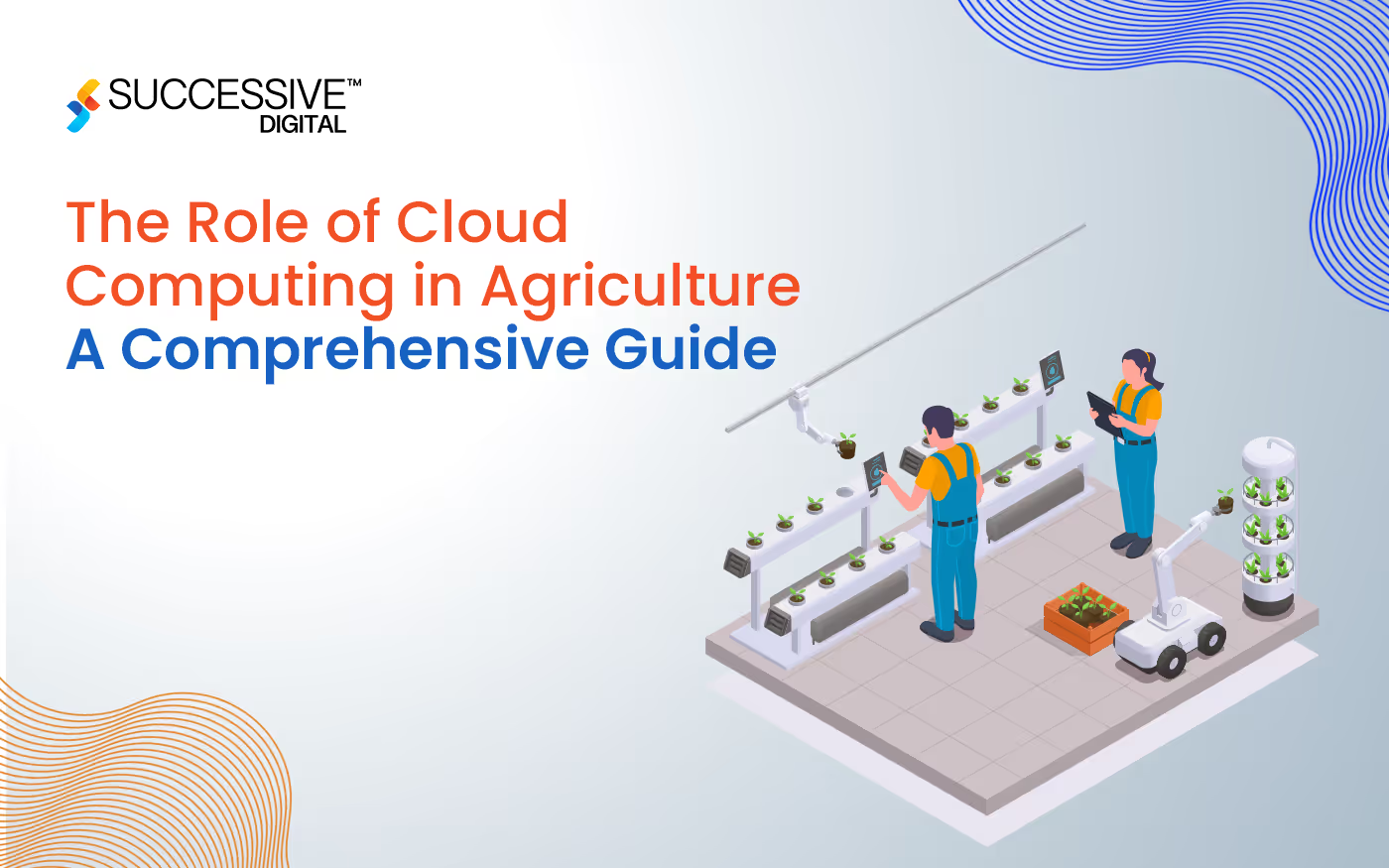When Jordan opened his banking app one early Monday morning, he didn’t just see a generic dashboard. He saw:
- A friendly greeting: “Good morning, Jordan - ready to make this week count?”
- A personalized banner: “Explore our travel rewards card - since you’ve got a trip coming up?”
- A chat prompt: “Questions about budgeting for that trip? I’ve got ideas for you.”
Those micro-moments, human, timely, relevant, are not luck. They reflect how modern FinTech firms are shifting from generic digital services to truly personalized journeys by adopting digital transformation strategy. And a key enabler behind that shift is CMS Solutions (Content Management System).
The FinTech Explosion & Customer Expectations
Over the past decade, FinTech has taken off. As one report found, nearly half of American consumers used a FinTech product in 2021, and venture capital investment in FinTech rose from USD 19.4 billion in 2015 to USD 33.3 billion by 2020.
Mass adoption has followed: by 2022, roughly 80% of consumers across income levels were using FinTech solutions, and usage is nearly equal among men and women.
Yet there’s a twist: while many institutions completed large digital transformation projects, those investments haven’t always translated into superior customer experience transformation. According to research, only 11% of financial institutions believe they deliver excellent customer experience, and only 32% feel their CMS technology supports effective personalization.
In short: the FinTech industry is digital-but-not-yet personalized and that’s where CMS enters the story.
Why CMS Matters for Personalized Customer Journeys
A CMS is not just a web page publishing place. For the present day FinTech companies, it is an orchestration point in organising individual customer experiences: managing content, segmenting audiences, activating various flows on different behaviour, connecting with CRM, marketing bots, and analytics software.
Consider one example: a FinTech platform fronts a Headless CMS to give web, mobile, and in-app experiences out of the same source of truth. It segments users (for example, “globetrotters”, “first-time borrowers”, “wealth-builders”) and dynamically delivers offers or content to each cohort.
By integrating CMS with journey orchestration, FinTechs gain:
- Consistency across channels - content and offers align whether the consumer is on mobile app, web portal, or inbound call.
- Speed and agility - marketing or product teams can publish new journeys or content without waiting weeks for IT changes.
- Personalization at scale - the system adapts dynamically based on persona, behaviour, lifecycle stage, or product usage.
Story: “Mia’s Journey”
Mia, a small business owner, downloads a FinTech-market app to manage cash flow. Her first interaction: a basic welcome. But within days, the CMS triggers a bespoke path: she receives a dashboard specifically tuned to “small business owner”, sees an offer for a real-time invoice-financing product, and gets push notifications reminding her that she has a tax filing deadline approaching with a special consultancy offer bundled.
Behind the scenes, the CMS detected her business profile (via onboarding data), cross-referenced her behaviour (frequent invoice uploads), and scheduled a journey segment (small biz owner>growth mode). The result: higher engagement, fewer drop-offs, and a client more likely to use premium features.
Four Pillars FinTech Firms Should Enable Via CMS Solutions
- Data-Driven Segmentation & Personas
Build personas based on behaviour, life-stage, product adoption, and channel preferences to ensure seamless customer journey mapping. With CMS solutions and data integration, content and journeys can be tailored for each persona. For example, a “globetrotter” persona might receive offers tied to international travel spending and credit products. - Omnichannel Journey Orchestration
A CMS connected to CRM, analytics, and channel systems ensures the user receives consistent messaging across mobile apps, web portal, email, and branch touchpoints. Only 32 percent of marketers reported that their CMS supported personalization, yet 92 percent of them believe that personalized customer journeys are essential to business performance. - Real-Time Personalization
Behavioral analytics and AI enable the dynamism of CMS in altering the content or flow depending on what the user is doing. As an illustration, when a user hovers over a credit card option but fails to tap apply, the CMS may send an easy application journey or provide a live chat. - Governance, Compliance & Security
In FinTech, trust is non-negotiable. A CMS must support compliance (for example, KYC, data protection), secure data handling, role-based access controls, and integrations with platforms managing banking data. Resources show enterprise-grade CMS solutions already support such needs.
Read more: Why Should You Choose Acquia CMS For Headless Website Development?
How to Approach Implementation – A Map for FinTech Firms
Step 1: Audit existing CMS and content workflows
Many firms have CMS systems used mainly for marketing content. These often aren’t connected to product journeys, behaviour data, or CRM. A gap analysis helps define modernization needs.
Step 2: Persona and journey map definition.
Use leverage data to develop actionable personas (for example, student borrower, SMB owner, investor). Map travels in awareness and onboarding, usage, renewal and advocacy.
Step 3: CMS upgrade or decoupled/headless architecture integration.
Select platforms that can be used to create dynamic content, APIs, personalization, and omnichannel delivery. Certain CMS providers specifically point to financial-services personalization.
Step 4: Link CMS with data ecosystem.
Combine CMS and CRM/CDP, analytics, product systems and marketing automation such that content triggers can react to behaviour or lifecycle events in real time.
Step 5: No pilot targeted journeys and measured results.
Introduce limited trips on high-risk segments (for example, credit card churners), maximize content, quantify uplift, reduce bounces, and customer satisfaction.
Step 6: Scale and govern
Define governance frameworks for content, versioning, compliance approvals, and ongoing optimization. Expand from pilot to full persona set and multiple channels.
Why This Matters Now
With the usage of FinTech Solutions experiencing an unprecedented boom (80% + across the income ranges), the anticipation has changed. The consumers desire personal, relevant and instant interactions.
However, most institutions lag along the curve: fewer than 30 percent have mapped the customer journey, and fewer than half have implemented AI-based personalization.
CMS-led personalized trip provides a competitive edge to FinTech companies: customer retention, better conversion, lower churn and greater online trust. Not only the digital transformation, but the transformation that the customer experiences.
Common Pitfalls & How to Avoid Them
- Treating CMS as a Website Tool Only: If the CMS remains siloed in marketing, journeys remain disconnected. Avoid this by linking CMS solutions to product systems and behaviour data.
- Over-Segmenting Without Behaviour Data: Too many static segments produce complexity without precision. Use behavioural and lifecycle data first.
- Ignoring Governance & Compliance: Personalization without oversight leads to risk. Ensure content approvals, audit trails, and secure processes are embedded.
- Launching Many Journeys Without Measuring: Without measurement you don’t know what works. Pilot, measure, refine, scale.
The Road Ahead
Picture this: A user receives a banking SMS, clicks it and enters the app, where the homepage has dynamically rearranged to highlight exactly the product she accessed earlier, along with a short video clip, user-friendly language, and a one-click apply button. In the Q&A chat within minutes, the user confirms her identity and completes sign-up-all seamlessly. Later, the app’s notification reminds her of an upcoming payment due, offers an optimized repayment plan, and even suggests travel-related benefits based on her profile.
All of that flows from a CMS that speaks the language of the customer, not just the product manager.
In a world where FinTech firms compete not just on rate and features, but on experience, a CMS capability is no longer optional. It’s essential. By building an agile CMS-powered journey, FinTechs can transform every touchpoint into a personal moment, one that builds trust, drives growth, and keeps the customer returning.
Conclusion
The FinTech industry revolution isn’t over, it’s evolving. The most successful firms won’t just offer Digital Transformation services; they’ll create digital experiences that feel built for every customer. A modern Content Management System, integrated into personalized customer journeys, is what turns that ambition into reality.
To learn more about customer experience transformation, connect with us!
.avif)
















.jpg)









